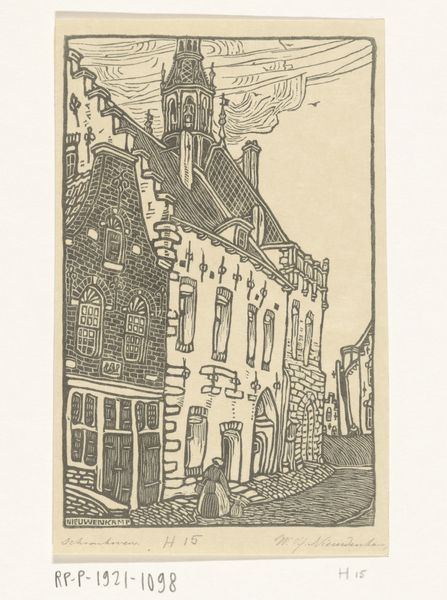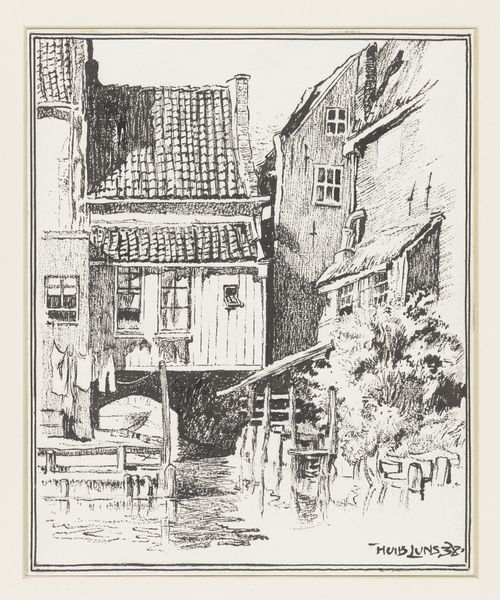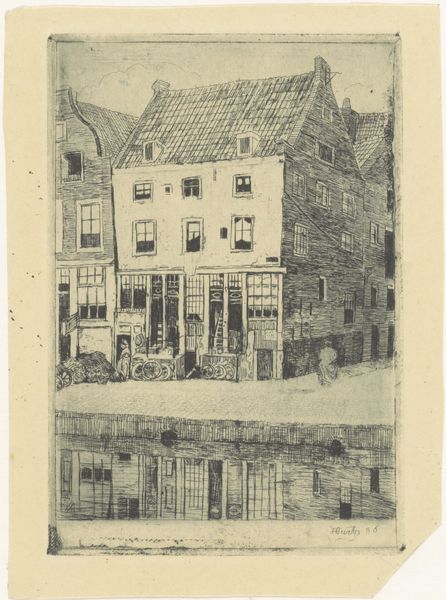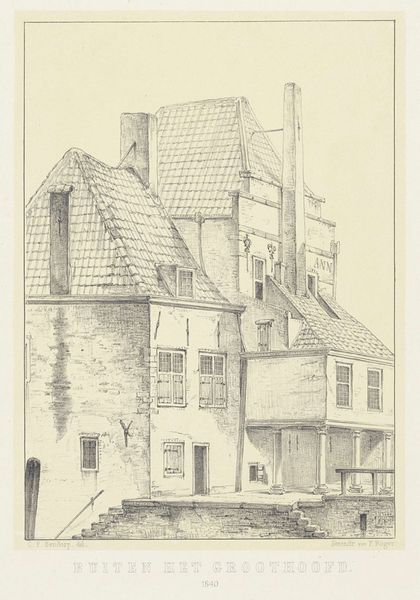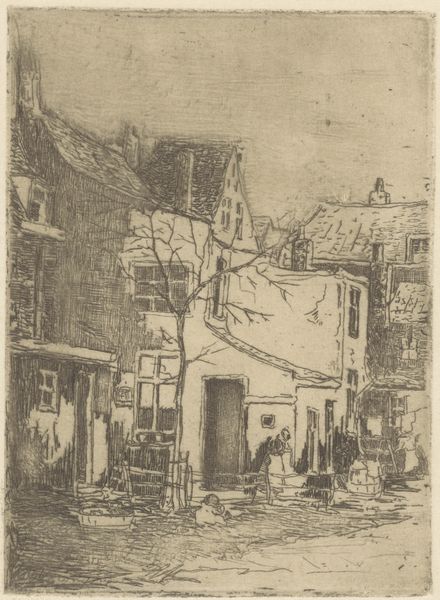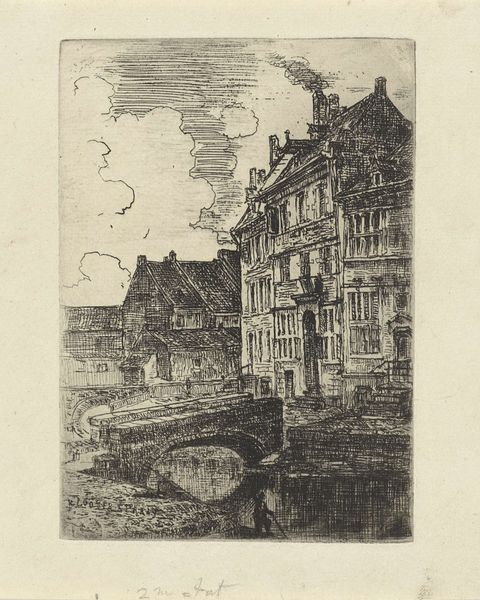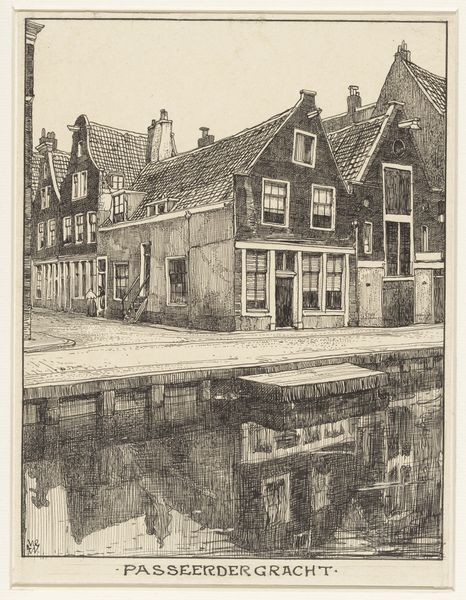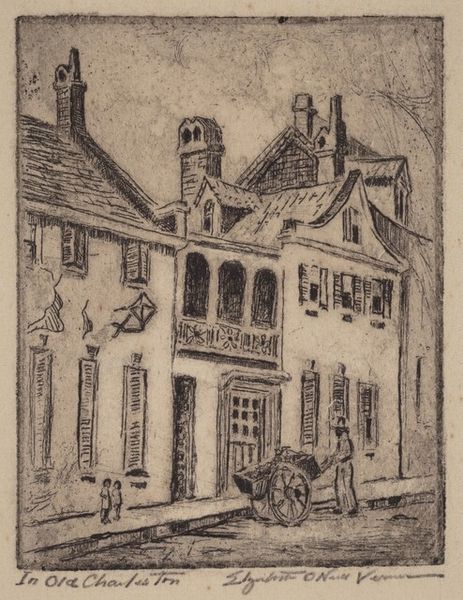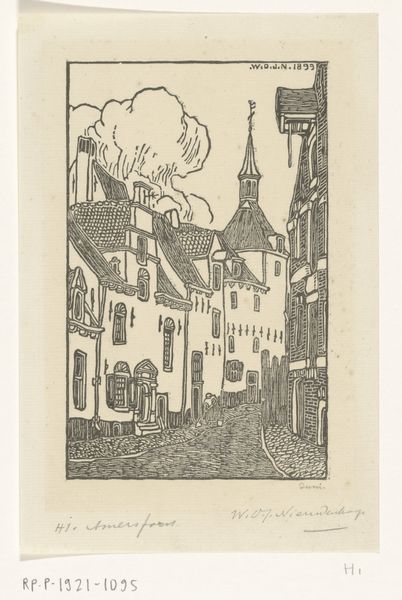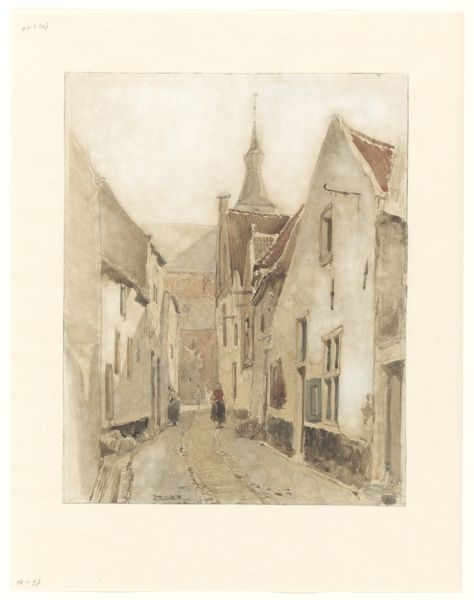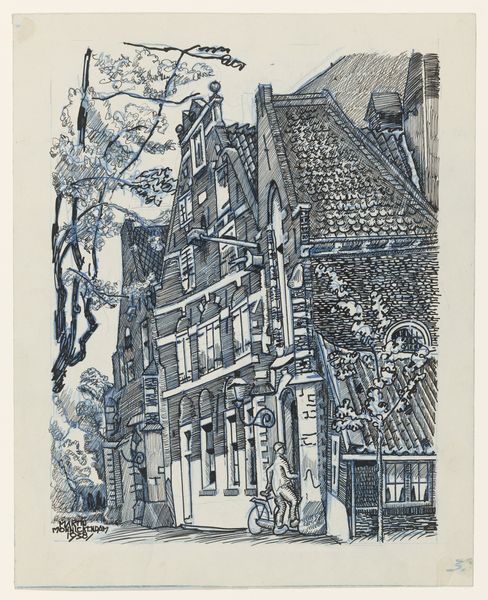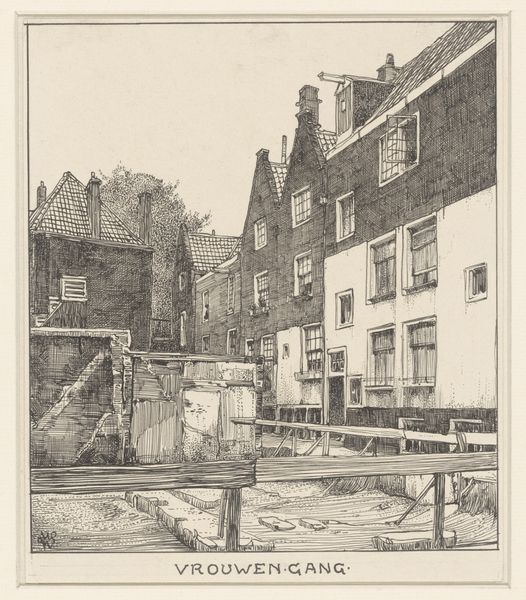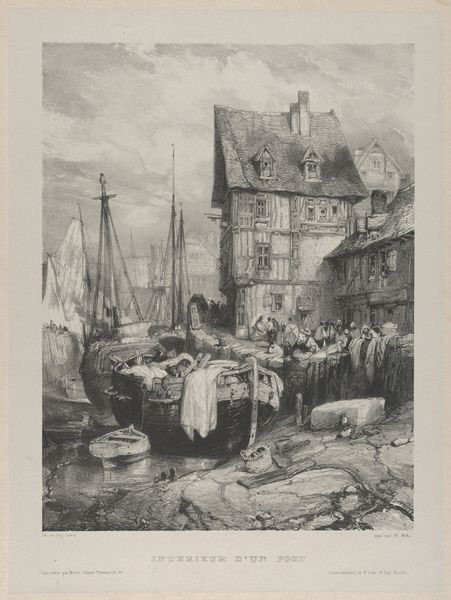
print, etching
#
dutch-golden-age
# print
#
etching
#
cityscape
Dimensions: height 120 mm, width 78 mm
Copyright: Rijks Museum: Open Domain
This etching of houses in Rotterdam was made by Jan de Jong, probably around the turn of the 20th century. Etching is a printmaking technique which harnesses acid to cut into a metal plate, allowing for the creation of detailed and finely-lined images. It is an indirect and demanding method. The artist first covers the plate with a waxy, acid-resistant ground. Then, using a needle, they scratch away the ground to expose the metal. When the plate is dipped in acid, the exposed areas are etched, creating grooves. Ink is applied to the plate, filling these grooves, and the surface is wiped clean. Finally, the plate is pressed onto paper, transferring the ink and creating the print. In de Jong’s print, the linear precision lends itself well to the architectural subject matter, and the overall effect is one of great sensitivity and detail. The very act of printmaking implies reproduction and distribution, and therefore, a wider social engagement for the artwork.
Comments
No comments
Be the first to comment and join the conversation on the ultimate creative platform.
